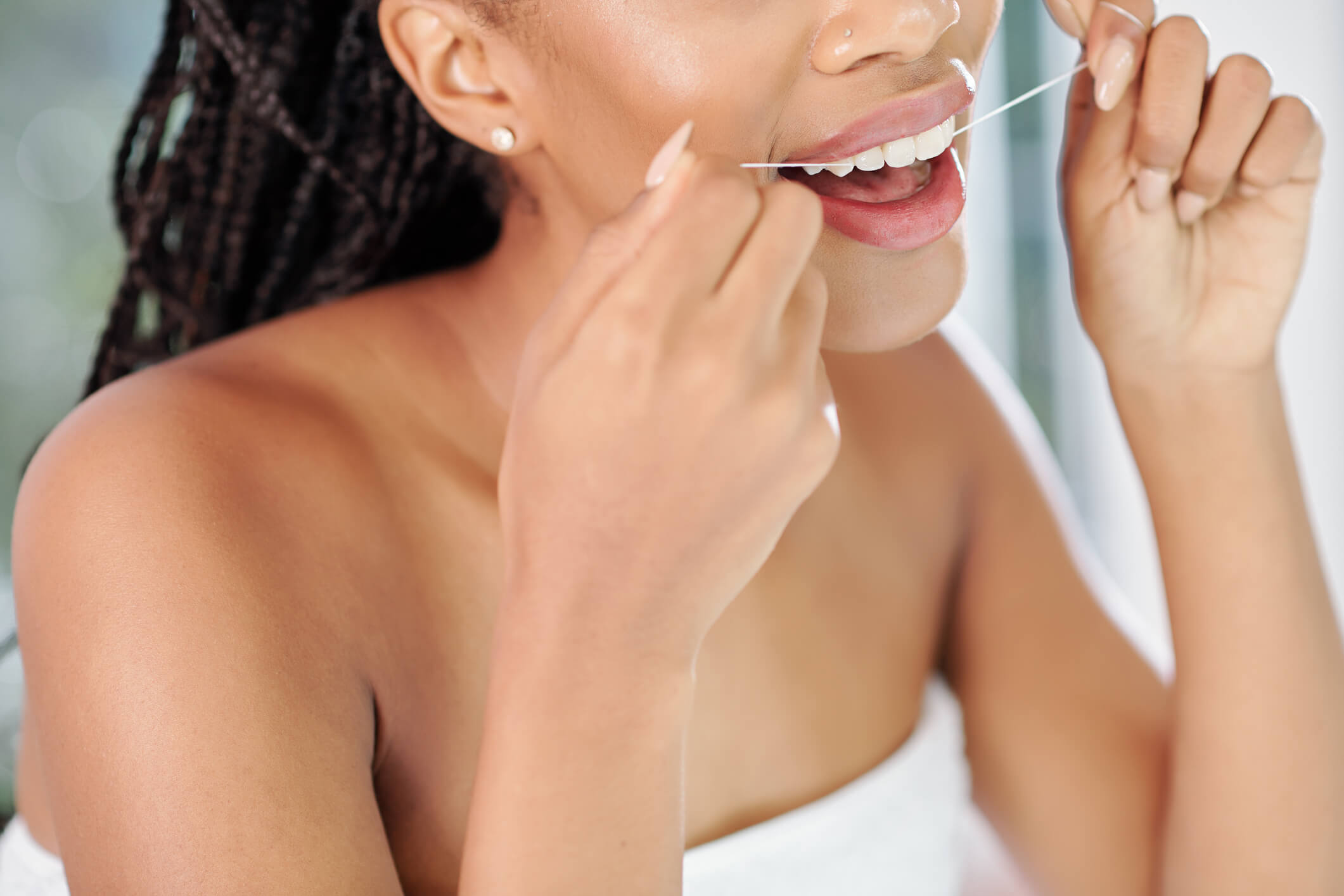
Can You Fight Bad Breath with Probiotics?
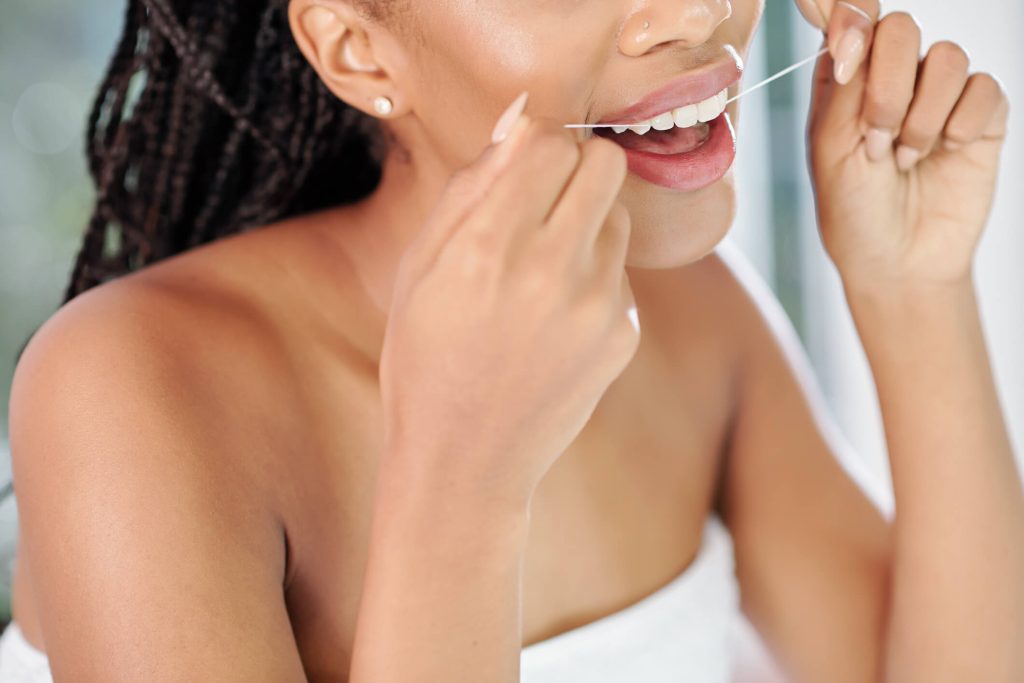

Can You Fight Bad Breath with Probiotics?
Bad breath, or halitosis, is a common and often embarrassing problem affecting millions worldwide. Traditional solutions like mouthwashes, breath mints, and regular brushing can help mask the symptoms, but they don’t always address the root cause.
Recent studies suggest that probiotics, commonly known for their benefits to gut health, might offer a promising solution to bad breath.
This article explores the science behind probiotics and their potential role in combating halitosis, providing insights into how these beneficial bacteria can help maintain a healthier, fresher mouth.
Note: Bad Breath could be a sign of serious medical conditions. You should consult your dentist and physician to rule out serious disease. Once those are ruled out and you still have stubborn bad breath, the tips in this article might be helpful.
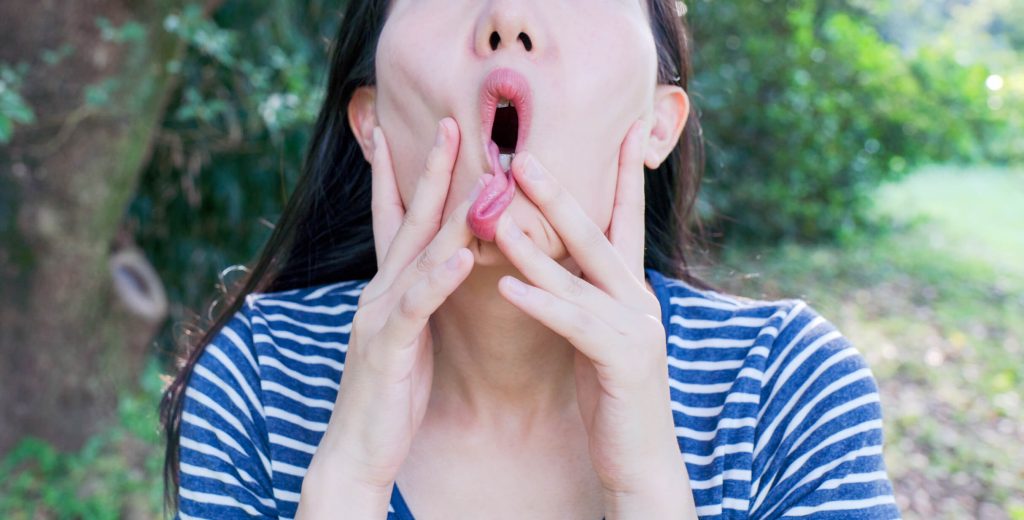
What Is the Oral Flora?
Your mouth is home to the second most diverse microbial community in the body, with over 700 species of bacteria living on our teeth and tissues. It contains a complex variety of microorganisms, including bacteria, fungi, viruses, and protozoa.
The mouth provides several different habitats for microbes, including the teeth, gums, tongue, cheeks, lips, and the roof of the mouth. Each area offers unique conditions that support various types of microbes, creating a complex and diverse environment for microbial communities.
These microbes play a critical role in many important functions, including keeping harmful microorganisms from growing and causing disease and supporting proper immune system function.
What Causes Bad Breath?
Bad breath can have multiple causes, from diet to dental health. In this section, we’ll examine the key factors behind halitosis.
Health Conditions
It’s important to note that bad breath can also indicate an underlying medical condition. Here are some possibilities:
Respiratory infections: such as pneumonia, bronchitis, or sinusitis, can also lead to bad breath. These infections can produce mucus and harbor bacteria, contributing to unpleasant odors.
Gastrointestinal problems: like acid reflux, GERD, and stomach ulcers can cause bad breath when stomach acids or partially digested food back up into the mouth. H. pylori bacterial infections and even constipation can also cause bad breath.
Poorly controlled diabetes: might cause a fruity or acetone-like breath due to a condition called ketoacidosis.
Liver and kidney diseases: can also result in bad breath due to a buildup of toxins in the body.
Gum diseases: such as gingivitis and periodontitis, can produce strong-smelling compounds due to bacteria in the mouth.
Untreated cavities: when deep, can hold onto food and bacteria, making your breath smell bad.
Dry Mouth: can result from medications like antidepressants, antipsychotics, diuretics, or antihypertensives. Treatments such as chemotherapy or radiation can also cause dry mouth, as can diseases like diabetes and Sjögren’s syndrome. ——-Dry mouth creates the perfect environment for bacteria to grow because it lacks the proper pH of saliva to inhibit bacterial growth.
If you have persistent bad breath or think you might have one of these conditions, see your healthcare provider right away. Ignoring it could lead to more serious health issues, so it’s crucial to get a professional diagnosis and appropriate treatment.
If after ruling out any serious conditions, you still have stubborn bad breath, consider the following causes and treatment.
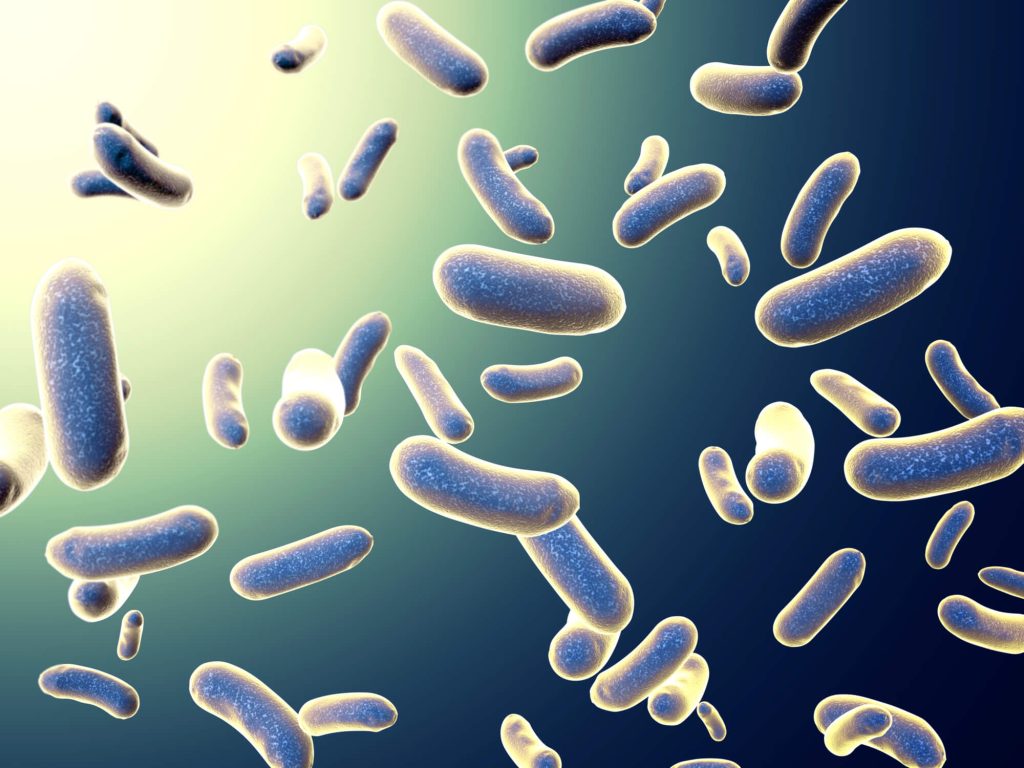
Bacterial Imbalance
Your oral microbiome needs to maintain homeostasis, or balance, to support its essential functions. When things go wrong, it’s called “dysbiosis,” where harmful bacteria take over and cause bad breath.
Unfortunately, many factors can lead to imbalance, including:
- Not brushing or flossing regularly
- Consuming too much sugar or acidic foods
- Smoking
- Hormonal changes such as during puberty and pregnancy
- Medical conditions and medication that reduce saliva flow
The mouth’s warm and moist environment supports the growth of microorganisms. Nutrients from saliva proteins, glycoproteins, and gingival crevicular fluid (GCF) fuel these microbes.
Unlike other tissues, teeth do not shed or naturally renew themselves, which allows biofilms (microbial communities) to form and persist.
Plaque, a sticky film composed of bacteria, food particles, and saliva, forms on teeth and along the gumline. If you don’t remove it with regular brushing and flossing, it can harden into tartar, further encouraging bacterial growth and biofilm formation.
The bacteria in plaque also produce acids that can erode tooth enamel and lead to cavities, and their metabolic by-products contribute to bad breath.
Dental treatments like restorations, crowns, bridges, removable prostheses, and implants create stable surfaces that allow biofilm growth.
The most common cause of bad breath is volatile sulfur compounds (VSCs), smelly gasses produced by bacteria in the mouth. These bacteria break down proteins on the tongue and around the gums, leading to unpleasant odors.
Depending on the predominant bacteria, your breath may take on a particular smell. Here’s a rundown of a few:
| Smell | Substance |
| Rotten eggs | Hydrogen sulfide |
| Fishy | Trimethylamine |
| Putrid or Barnyard Smell | Methanethiol |
| Cheesy or Sweaty Feet Odor | Short-chain fatty acids like butyric and isovaleric acids |
| Rotten Meat or Spoiled Fish Smell | Putrescine and cadaverine |
| Sweet, Musty Smell of Cooked Onion | Other VSCs: ethanethiol, S-ethyl thioacetate, diethyl disulfide, dimethylsulfide |
| Feces | Indole and Skatole |
Diet
Probably the easiest to point a finger at, what you eat affects how pleasant or unpleasant your breath may smell. Some of the biggest offenders include garlic, onions, and spicy food.
Smelly breath also occurs when food gets stuck in your teeth, which can become a breeding ground for bacteria. These bacteria break down the food particles, producing foul-smelling gasses and acids contributing to bad breath.
Fasting and certain diets, like ketogenic and high-protein diets, can also cause bad breath. When your body doesn’t get enough carbohydrates, it first uses stored glucose. Once that runs out, it starts breaking down fat, which produces chemicals called ketones that make your breath smell sweet and odd.
This can also happen if you exercise a lot without eating enough carbs. High-protein foods like meat, fish, and dairy give bacteria in your mouth the proteins they need to produce smelly, volatile sulfur and nitrogen compounds.
How Might Probiotics Help with Bad Breath?

Probiotics are often praised for their digestive benefits, but did you know they might also help with bad breath? Discover how these beneficial bacteria could help improve your oral health and keep your breath smelling fresh.
A meta-analysis of four studies involving nearly 300 participants examined the effectiveness of probiotics in improving bad breath. In these studies, participants took probiotics containing Streptococcus salivarius or Weissella cibaria. Researchers evaluated breath odor, volatile sulfur compounds (VSCs), and overall breath improvement before starting the probiotics and up to 12 weeks later.
While the studies showed some improvement, the results were mixed due to factors like using probiotics and antiseptics, braces in some participants (which are more likely to harbor bacteria), and varying follow-up periods and probiotic strains.
Despite these challenges, the findings are promising and suggest that probiotics might benefit your oral health routine. Let’s explore what the research says and how these friendly bacteria could potentially help freshen your breath.
Balance Oral Bacteria
Probiotics may help keep your oral microbiome balanced to prevent harmful bacteria from taking over.
A study of 46 subjects explored the ability of the probiotic Weissella cibaria, a lactic acid bacteria, to stop the production of VSCs. Participants gargled with a solution containing the probiotics twice daily for two minutes. Researchers measured their mouth VSC levels before and after the treatment using a portable gas chromatograph.
The results showed that gargling with W. cibaria significantly reduced bad breath. It lowered VSC hydrogen sulfide levels by 48.2% and methyl mercaptan levels by 59.4% compared to the control group, which used plain distilled water.
Researchers believe the probiotic worked in multiple ways to reduce VSCs, including:
- Produce hydrogen peroxide, which inhibits the growth of harmful bacteria
- Sticking to harmful bacteria, making it easier to eliminate them from the mouth
- Helping maintain a higher pH in the mouth, making it harder for bacteria to grow
Biofilm and Cavity Development Reduction
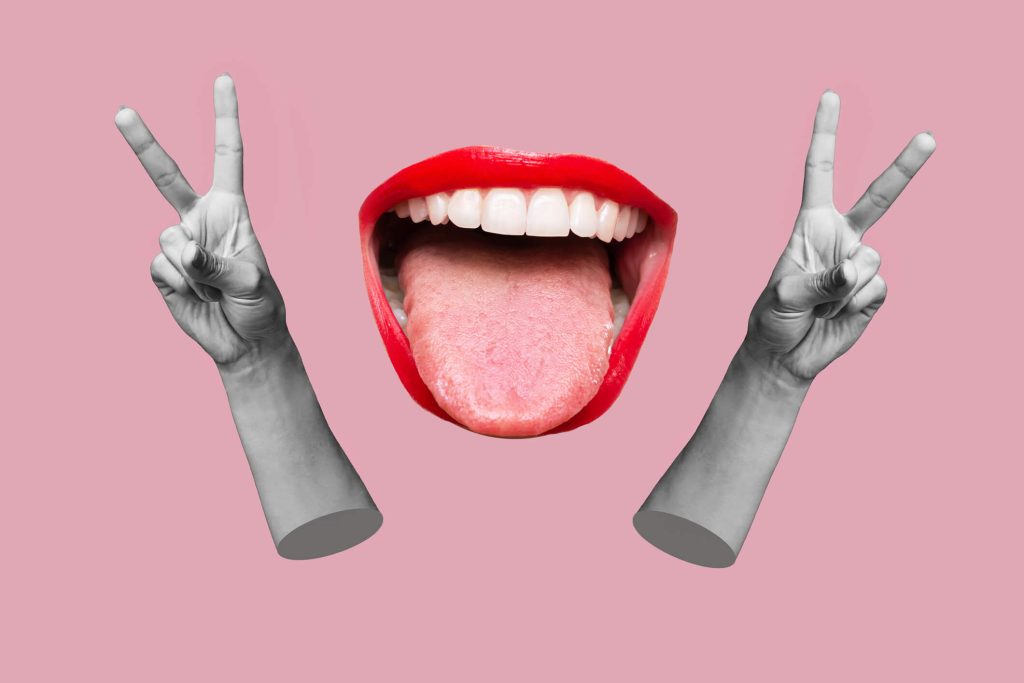
Remember that biofilm we discussed earlier, the microbial communities that can form and persist on your teeth and tissues? A review of studies explored how probiotics might help break those down.
Probiotics use various methods to disrupt harmful bacteria. One way is by producing substances like surfactants, bacteriocins, EPS, organic acids, lactic acid, fatty acids, enzymes (lipase, amylase), and hydrogen peroxide.
These substances hinder the activity and adhesion of harmful bacteria to surfaces. Probiotics also prevent biofilm formation and the survival of harmful bacteria, eventually eradicating biofilms.
Just like we mentioned for preventing VSCs, probiotics create an unfavorable environment for pathogens by altering pH levels and competing for surfaces and nutrients. They adhere to human tissues and prostheses, preventing harmful bacteria from colonizing these surfaces. By modulating the host’s immune response and forming non-pathogenic biofilms, probiotics prevent the formation of harmful biofilms.
The microorganisms most commonly associated with cavities include:
- Streptococcus sobrinus
- S. mutans
- Candida albicans
Harmful bacteria like S. mutans produce acids when they break down sugars from food, leading to a drop in pH levels in the mouth. This causes tooth enamel to demineralize and form cavities. These bacteria form a sticky layer called biofilm or dental plaque on the teeth, which protects them and allows them to produce acids continuously, further contributing to tooth decay.
However, it’s a lot harder for cavities to form without a strong biofilm. And this is where probiotics come in. A study explored the effects of probiotic Streptococcus salivarius on known cavity contributor S. mutans. Forty children with tooth decay due to cavities took a probiotic lozenge for seven days.
Researchers examined changes in saliva before and after treatment for S. mutans content. The saliva of those who took the probiotic lozenge had a significant decrease in the cavity-causing bacteria, suggesting that probiotics create an environment that makes it harder for S. mutans to survive.
Which Probiotics Are Best for Bad Breath?
The best strains of probiotics for the fight against bad breath are those in the Lactobacillus, Streptococcus, and Weissella families. These strains show the ability to inhibit suboptimal bacteria, reduce the production of volatile sulfur compounds (VSCs), and maintain a healthier oral environment.
Lactobacillus: Probiotics from this family are known for their ability to balance the oral microbiome. They produce substances that inhibit suboptimal bacteria and reduce VSCs, often responsible for bad breath.
Lactobacillus acidophilus, in particular, is highlighted for its ability to stick to suboptimal bacteria, preventing them from developing into cavities.
Streptococcus: Specifically, Streptococcus salivarius strains K12 and M18 are effective. These strains produce bacteriocins, natural antibacterial agents, that help control the population of suboptimal bacteria in the mouth, thus reducing bad breath.
Weissella: Strains like Weissella cibaria show promise in reducing levels of hydrogen sulfide and methyl mercaptan, VSCs that contribute to bad breath. These probiotics help maintain a healthy pH balance in the mouth, creating an environment less favorable for the growth of odor-causing bacteria.
While Lactobacilli and Streptococcus produce lactic acid and tend to grow in more acidic conditions, the ideal salivary pH is between slightly acidic to slightly alkaline conditions. Modern dentistry believes that more alkaline saliva is better for remineralizing teeth and inhibiting cariogenic bacteria, so most toothpastes and mouthwashes leave the saliva alkaline.

Sources of Probiotics for Bad Breath
If you’re looking to incorporate these into your daily routine, you may also be wondering how to take them. In the studies we discussed, participants took probiotics in the form of oral rinses and lozenges.
Other studies also highlight the benefits of consuming fermented dairy for its ability to reduce cavity-causing bacteria, S. mutans. Researchers highlighted yogurt and kefir as sources containing beneficial Lactobacillus strains, including:
- L. rhamnosus
- L. reuteri
- L. lactis
- L. acidophilus
You can get a great source of L. rhamnosus and other Lactobacillus probiotics in our drinkable probiotic blend Microbiome Breakthrough.
While probiotics can improve oral health and freshen your breath, they may not treat or prevent cavities.
Other Ways to Reduce Harmful Oral Bacteria
Obviously, good oral hygiene plays a crucial role in helping remedy bad breath. The first place to begin is flossing and brushing at least twice a day, every day. This is especially important at night to ensure there is nothing bacteria can feed on all night. Let’s look at what you can do beyond these well-known strategies.
Tongue Cleaning
You’ve probably heard of cleaning your tongue to decrease bacteria in your mouth, but how effective is it? Turns out it does a pretty good job of eliminating some of those smelly VSC-causing bacteria. Cleaning your tongue helps remove food residue, cells, and bacteria between the small bumps on your tongue called papillae.
With various methods proposed, including tongue scraping and brushing, researchers set out to determine which was more effective at reducing bad breath. Fifty-six participants cleaned their tongues back to front ten times using either a toothbrush, tongue scraper, or both.
Researchers measured breath odor before and after use and found that all methods significantly reduced bad breath, with no single method proving superior to the others.
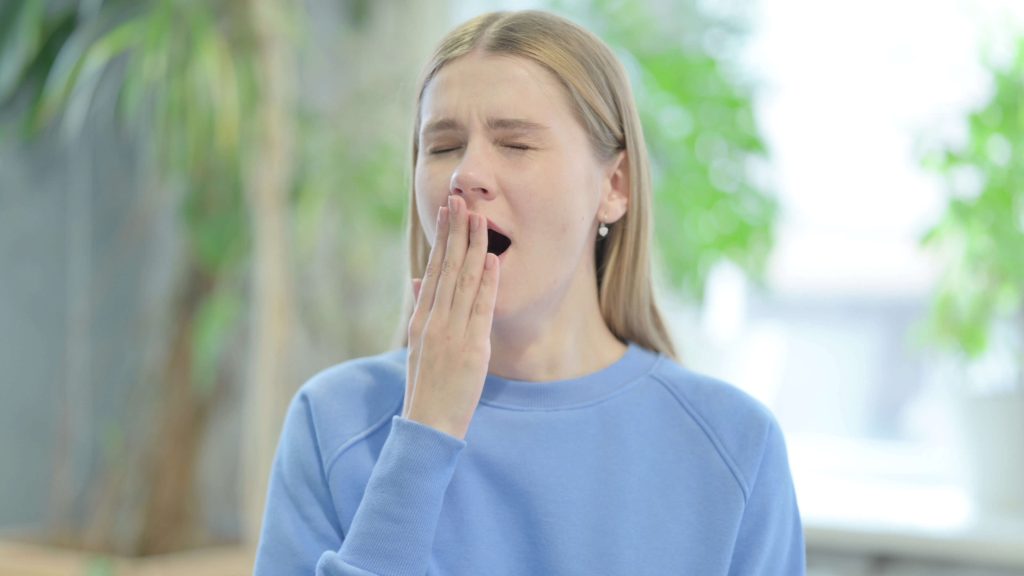
Baking Soda
While it tastes a little salty, rinsing with baking soda is another effective way to reduce harmful bacteria.
A study of 25 healthy subjects explored the effects of baking soda on oral pH and bacteria. Participants did not brush their teeth overnight. One hour after dinner, researchers collected initial saliva samples. They then rinsed with a baking soda solution.
After testing saliva samples again in the morning, researchers found that those who rinsed with the baking soda had a significantly increased pH and decreased oral bacteria.
Rinsing with baking soda makes the mouth less acidic and more alkaline, inhibiting the growth of acid-loving bacteria. It also acts as a cleansing agent by dissolving mucus and loosening debris, further reducing the number of bacteria.
Oil Pulling
Used for centuries and documented in ancient medical texts, oil pulling involves vigorously swishing oil in your mouth with edible oils like sesame, coconut, or sunflower.
A meta-analysis of nine randomized controlled trials explored the effects of oil pulling on oral health. While oil pulling significantly reduced bacterial colonies compared to a control group, it did not significantly reduce plaque.
While researchers don’t fully understand how oil pulling improves oral health, they’ve devised three possible theories:
- A chemical reaction where an alkaline substance breaks down fats occurs, creating soap, which helps clean better.
- The oil’s thickness prevents plaque and bacteria from building up.
- Antioxidants in the oil detoxify and kill microorganisms.
Overall, more studies are needed to fully understand the effectiveness of oil pulling and how long and how often it provides the greatest benefits.
If you try oil pulling, swish the oil in your mouth for at least ten minutes, with some studies recommending up to 20 minutes. It’s important not to swallow the oil after use because it’s filled with toxins and bacteria.
If coconut oil is your oil of choice, it’s probably best not to spit it into the sink since it’s solid at room temperature and might clog your pipes.
Light Therapy
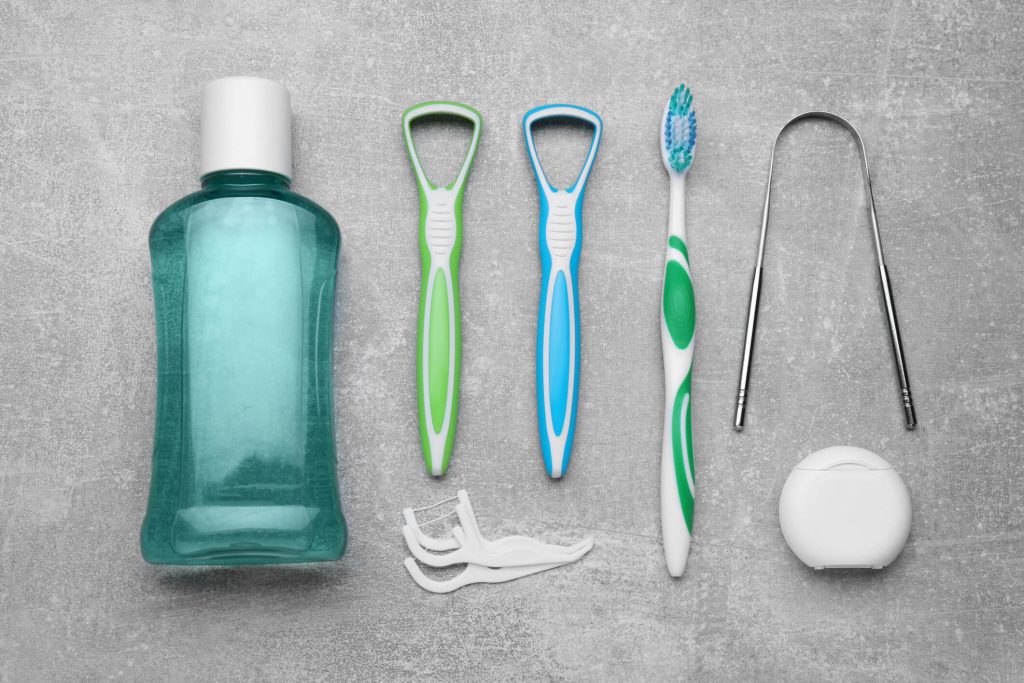
Newer to the oral health scene is light therapy to kill those nasty germs. It uses a non-toxic, light-sensitive substance called a photosensitizer, activated by visible light at a specific wavelength. Once activated, the photosensitizer reacts with oxygen to produce reactive oxygen species (ROS) that destroy bacterial cells.
This effect is limited to areas exposed to the light and works quickly. Bacteria, including those causing bad breath, are susceptible to the light, which disrupts their cell structures and metabolic pathways, making it unlikely for them to develop resistance.
A study of five adolescents combined red, infrared, and blue light to explore its effects on bad breath. Researchers measured the concentration of VSCs before and after 90-second light exposure. Light therapy reduced the concentration of VSCs by 32%.
Another study of 45 young adults explored how well red and blue light therapy reduces microbial levels in addition to bad breath. Researchers compared the effectiveness of light therapy, tongue scraping, or both.
They collected microbial samples before and after treatment, as well as after seven, 14, and 30 days, along with the intensity of bad breath. All groups showed a significant reduction in halitosis immediately after treatment, but the results were short-lived, emphasizing the need for regular treatment.
Conclusion
While bad breath can be embarrassing and persistent, exploring alternative treatments might provide some relief. Your first line of defense should always be maintaining proper oral care by flossing and brushing twice a day.
Probiotics offer a great way to help maintain oral microbiome balance and fend off the bacteria that produce stinky gas. By incorporating specific probiotic strains into your routine like those found in Microbiome Breakthrough, you might find an effective complement to your oral hygiene practices.
Remember to always talk to your healthcare provider. Probiotics are not meant to treat cavities or any underlying medical conditions discussed in this article, also known to cause bad breath.
References
- Kilian M, Chapple ILC, Hannig M, et al. The oral microbiome – an update for oral healthcare professionals. Br Dent J. 2016;221(10):657-666. doi:10.1038/sj.bdj.2016.865
- Aylikci B, Çolak H. Halitosis: From diagnosis to management. J Nat Sci Biol Med. 2013;4(1):14. doi:10.4103/0976-9668.107255
- Mogilnicka I, Bogucki P, Ufnal M. Microbiota and malodor—etiology and management. Int J Mol Sci. 2020;21(8):2886. doi:10.3390/ijms21082886
- Grudziąż-Sękowska J, Iwanicka-Grzegorek E. Aetiology, diagnosis and management of halitosis – a narrative review. J Educ Health Sport. 2022;13(1):235-245. doi:10.12775/jehs.2023.13.01.035
- López-Valverde N, López-Valverde A, Macedo de Sousa B, Rodríguez C, Suárez A, Aragoneses JM. Role of probiotics in halitosis of oral origin: A systematic review and meta-analysis of randomized clinical studies. Front Nutr. 2022;8. doi:10.3389/fnut.2021.787908
- Kang MS, Kim BG, Chung J, Lee HC, Oh JS. Inhibitory effect of Weissella cibaria isolates on the production of volatile sulphur compounds. J Clin Periodontol. 2006;33(3):226-232. doi:10.1111/j.1600-051x.2006.00893.x
- Barzegari A, Kheyrolahzadeh K, Hosseiniyan Khatibi SM, Sharifi S, Memar MY, Zununi Vahed S. The battle of probiotics and their derivatives against biofilms. Infect Drug Resist. 2020;13:659-672. doi:10.2147/idr.s232982
- Mallikarjun SB, Salim HP, Raju S, Surendranath AR. Randomized clinical trial of oral probiotic streptococcus salivarius M18 on salivary streptococcus mutans in preprimary children. Int J Clin Pediatr Dent. 2023;16(2):259-263. doi:10.5005/jp-journals-10005-2527
- Karbalaei M, Keikha M, Kobyliak NM, Khatib Zadeh Z, Yousefi B, Eslami M. Alleviation of halitosis by use of probiotics and their protective mechanisms in the oral cavity. New Microbes New Infect. 2021;42(100887):100887. doi:10.1016/j.nmni.2021.100887
- Magno MB, Nadelman P, de Abreu Brandi TC, et al. The effect of dairy probiotic beverages on oral health. In: Milk-Based Beverages. Elsevier; 2019:521-556.
- Baliga S, Muglikar S, Kale R. Salivary pH: A diagnostic biomarker. J Indian Soc Periodontol. 2013;17(4):461. doi:10.4103/0972-124x.118317
- Choi HN, Cho YS, Koo JW. The effect of mechanical tongue cleaning on oral malodor and tongue coating. Int J Environ Res Public Health. 2021;19(1):108. doi:10.3390/ijerph19010108
- Chandel S, Khan M, Singh N, Agrawal A, Khare V. The effect of sodium bicarbonate oral rinse on salivary pH and oral microflora: A prospective cohort study. Natl J Maxillofac Surg. 2017;8(2):106. doi:10.4103/njms.njms_36_17
- Peng TR, Cheng HY, Wu TW, Ng BK. Effectiveness of oil pulling for improving oral health: A meta-analysis. Healthcare (Basel). 2022;10(10):1991. doi:10.3390/healthcare10101991
- Lopes RG, de Santi MESO, Franco BE, et al. Photodynamic therapy as novel treatment for halitosis in adolescents: A case series study. Journal of Lasers in Medical Sciences. 2014;5(3):146.
- da Mota ACC, Gonçalves MLL, Horliana ACRT, et al. Effect of antimicrobial photodynamic therapy with red led and methylene blue on the reduction of halitosis: controlled microbiological clinical trial. Lasers Med Sci. 2022;37(2):877-886. doi:10.1007/s10103-021-03325-x
